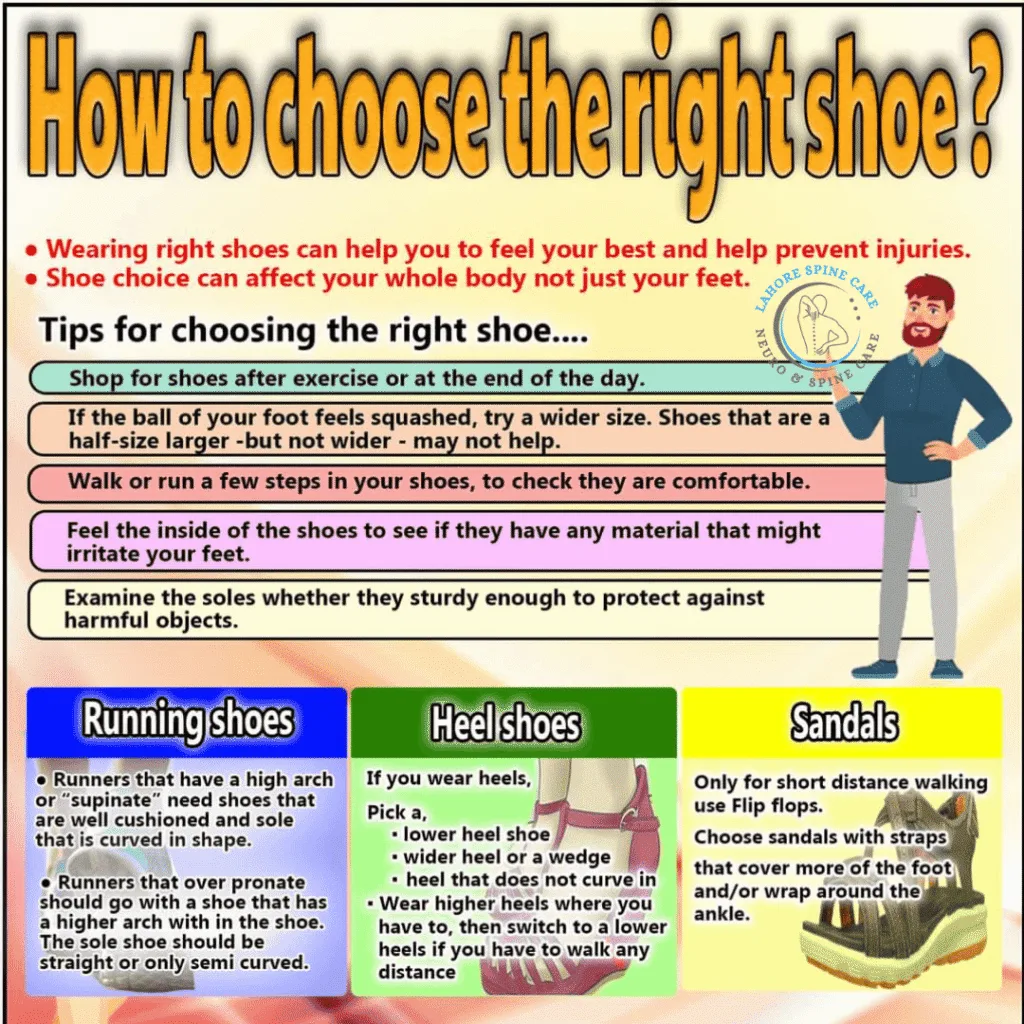LAHORE SPINE CARE

How to choose the right shoe for spine health is more important for spine health to maintain healthy biomechanics and ergonomics for feet. Your spine is the central support of your body, keeping you upright, steady, and able to move around each day. When it comes to spinal health, we tend to think mostly about chairs, mattresses, and posture, but one variable that’s often overlooked is footwear. The type of shoes that you wear can have a major impact on the positioning of your spine, how the weight is distributed throughout your body, and your general back health. How to wear the right shoe is not about comfort; it’s about safeguarding your spine for the long term.
Table of Contents
ToggleWhy Shoes Are important for Spine Health/How to choose the right shoe for spine health
When you walk, your feet are shock absorbers. The right shoes help to take the load off the knees, hips, and spine. Shoes that are poorly fitted or provide inadequate support, on the other hand, can contribute to misalignment, uneven gait patterns, and back pain. Over time, this can lead to spinal problems like a herniated disc, a resurgence of scoliosis or chronic lower back pain.
What To Look For In Shoes/How To Choose The Right Shoe
- Arch Support
- Each foot has a different arch – flat, normal or high. Wearing shoes which are not curated to your foot arch can overwork your spine.
- In fact, shoes with good arch support are often necessary for flat feet.
- High arches should use cushioned shoes to absorb the shock.
- Moderate support is needed in neutral arches.
- Heel Height
- High heels are fashionable, but they alter your center of gravity, putting your spine in unnatural curves. This tends to cause low back pain.
- The best heel height is less than 2 inches.
- Shoes that are completely flat can be worse; use shoes with heel lift.
- Shock Absorption & Cushioning
- Properly cushioned shoes take away the impact that goes up your feet to your spine. Look for:
- Memory foam or gel insoles
- Shock-absorbing midsoles
- Lightweight but supportive soles
- Proper Fit (how to choose the right shoe)
- Shoes that are too small, too big or worn-out force abnormal walking patterns and misalignment.
- Make sure there’s ample space for your toes to move around.
- Do not wear shoes that are too tight or too loose.
- To get a true fit, try shoes on at the end of the day when your feet have slightly swollen to get a true fit.
- Stability and Support (how to choose the right shoe)
Shoes need to provide heel stability with firm heel counters and tight control in the midfoot. This helps keep your spine neutral and helps prevent unnecessary twisting or strain.
- Activity-Specific Footwear
- Running shoes must be soft and flexible.
- Running shoes should be more shock absorbing and arch supportive.
- durability – especially Work shoes should be a balance of comfort, safety and durability – especially if you are standing all day.
General Advice for Footwear Habits that Support Your Spine
(How to choose the right shoe)
- Change worn-out shoes – Soles that are running down and lost cushioning increase spinal stress.
- Custom orthotics should be used if there are certain problems in the feet, such as plantar fasciitis or leg length discrepancy.
- Alternate shoes so you can avoid repetitive stress in supportive shoes.
- Reduce high heel wear to just the occasional use
conclusion on how to choose the right shoe
Your spine is an important part of your body that deserves to be treated with the same respect as any other area. By selecting shoes that offer proper support, cushioning, and fit, you can safeguard your spine, alleviate your stance, and avert lower back pain. Remember, investing in the right footwear is not just a matter of style – it’s about your long-term spinal health.

LAHORE SPINE CARE is proudly powered by WordPress